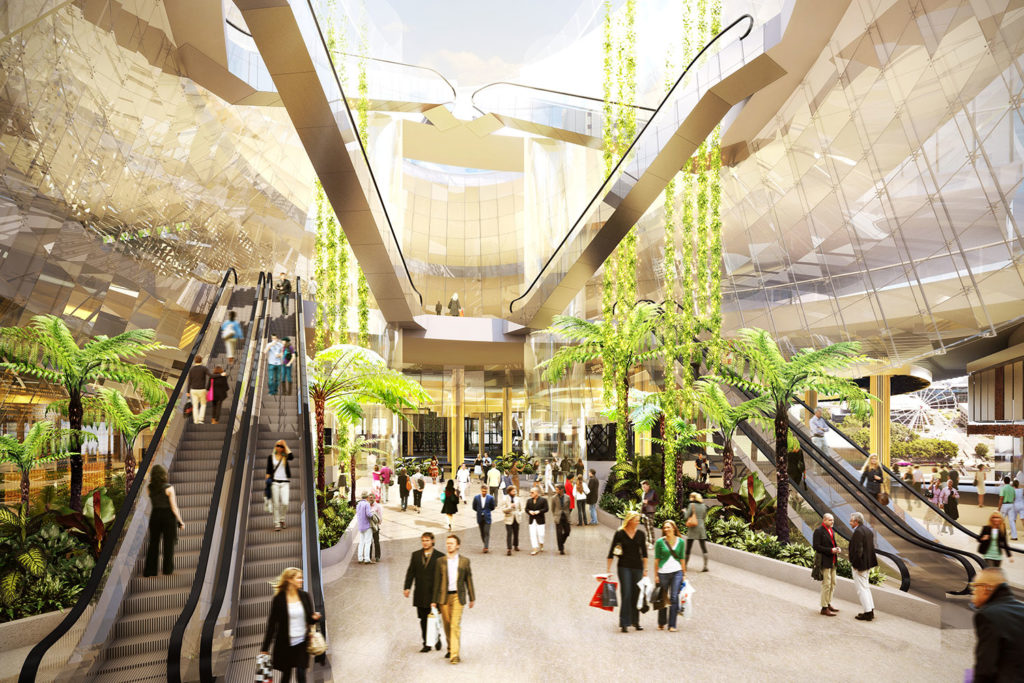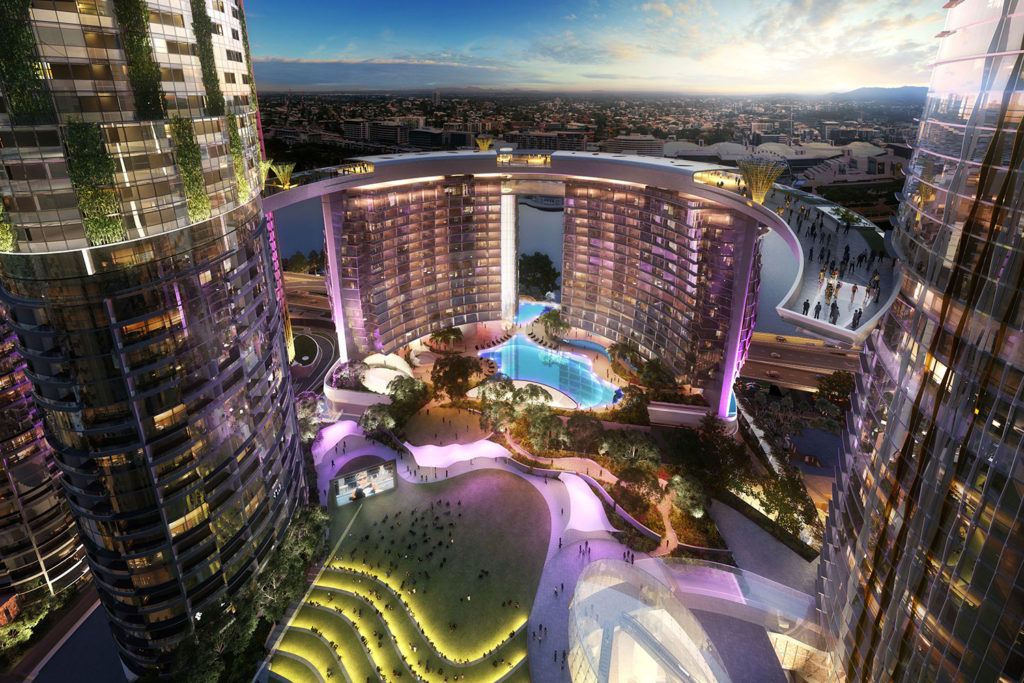“
There are so many things happening, combining the heritage elements with the new architecture, we have to use one single language to bring it all together.
The team at Urbis, who were engaged by the Destination Brisbane Consortium bid team in 2013 to successfully win the rights to develop the coveted 12-hectare site, is now proudly leading the master planning and development approval strategy for the project.
For Urbis senior landscape architects Andrew Kyriacou and Mona Koehbach, the experience of designing the public spaces surrounding the new hotel, residential, casino and entertainment precinct, has been about maintaining the intent of the development and integrating it within the fabric of the city.
It is a challenge, as well as a balancing act.
“It’s a matter of balancing the needs between the public and the private, and how you make them complement each other,” says Kyriacou.
“You need to bring the people in, give them enough shaded amenity and programmed activity, and connect all of the elements together to make something more significant than the sum of its parts – scale and intimacy of the plaza spaces are critical.”

Because Queen’s Wharf Brisbane is such a condensed and eclectic mix of historical buildings from different eras, preserved amongst the new hotels and entertainment complexes, fanning out into numerous large spaces, a new language in design needed to be created to bring coherence to the overall result.
Working with the lead designers, Koehbach believes they’ve managed to choose the right level of consistency and coherence in designing the public realm, focussing on the streets and spaces as the stage for activity and events – a backdrop to the new and old architecture of the precinct.
“There are so many things happening, combining the heritage elements with the new architecture, we have to use one single language to bring it all together.” says Koehbach.
The Ridgeline, for example, is a new public space system located between George and William Streets and comprises a heritage story of Brisbane and encompasses an entirely new way of moving through the city.
The adaptive re-use of buildings and the creation of a series of laneways, courtyards and active urban spaces between these buildings will create an invigorated new public realm linking the Queen Street Mall to the Botanic Gardens.


